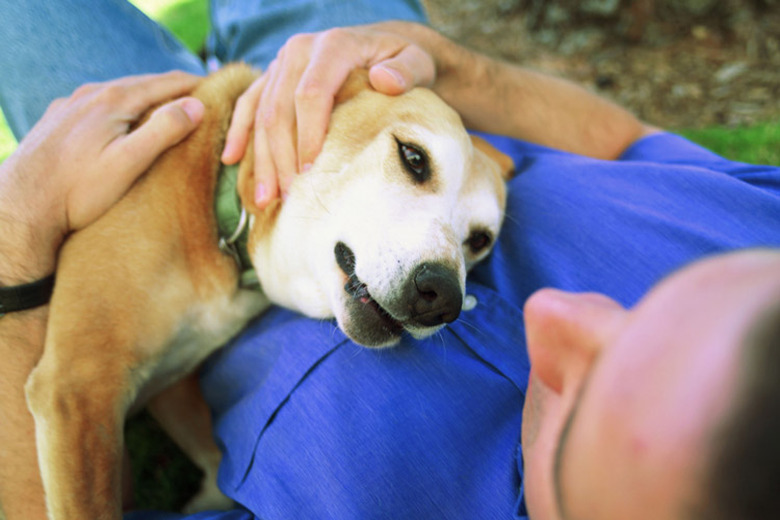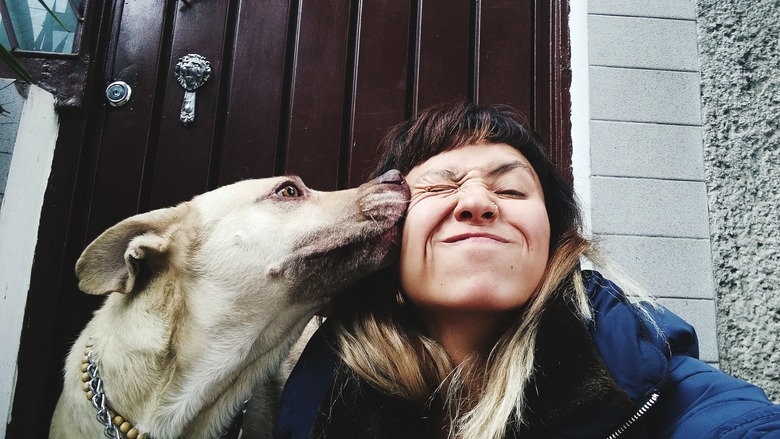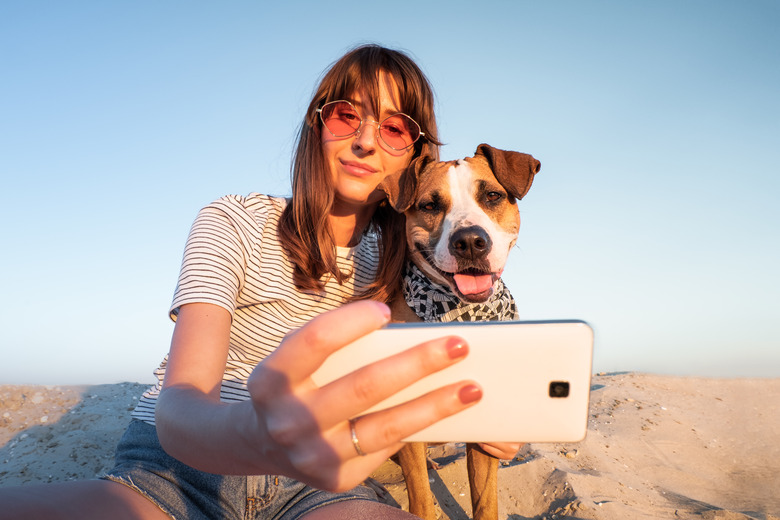Can I Make My Dog More Affectionate?
To encourage your dog to be more affectionate, you'll first have to strengthen the bond between you. It may sound like a monumental task, but it's really not. Canines are naturally eager people-pleasers — and there are many dog breeds that like to cuddle — so with proper care and consistent attention, your dog will return your affection in no time.
Be a provider
Be a provider
For your pet to be affectionate, she must trust you. From her perspective, you're trustworthy if you don't harm or scare her and if you meet her basic needs. Never physically discipline your dog, scream at her or strictly punish her; she learns through gentle corrections and positive reinforcement.
Let your dog know you're a reliable source of good things in her life. She requires nutritious food and fresh water every day, a clean and safe environment, daily exercise, and mental stimulation. Provide her with a comforting space of her own to sleep and chill out when feeling stressed and plenty of attention when she's feeling active. Keep her groomed, let her know the boundaries and limitations, and reward her for good behavior with treats and calm attention.
If you're looking for affection from your pet, the process truly works both ways. Meet her fundamental needs consistently and even a timid dog will in time come to trust you and offer you more affection.
Give him a job
Give him a job
Your dog will feel more secure when he knows what's expected of him and is able to respond correctly. Train your dog basic commands and, if he's an eager learner, to perform a few tricks. Training is a great bonding activity that enhances affection and establishes your role as leader and provider.
Use mild corrections delivered calmly rather than agitated or negative reinforcement. For example, if your dog starts relieving herself in the wrong place, interrupt her and calmly lead her to where she's supposed to go. Then, when she finishes correctly, reward her. Positive reinforcement is the key to a happy, obedient, and affectionate pet.
Pay attention to her
Pay attention to her
Your dog is a social animal who craves attention and strongly desires to be part of the family. Don't shut her away for hours or isolate her. Pay attention to her throughout the day, every day. This doesn't mean an occasional pat on the head suffices.
Engage with your pup. Talk to her, get on the floor with her, play games with her, take her outside, walk her, brush her, bring her to the dog park, and otherwise interact with her in meaningful ways. Allow her to curl up at your feet or cuddle next to you on the couch. The more attentive you are, the more affectionate your pet will be.
Be available to each dog
Be available to each dog
Although your dog needs to feel like part of the family, he also needs to spend time with you alone to truly bond. Face time is especially important if you have more than one dog. Dogs who spend all their time together tend to bond strongly with each other to the exclusion of the humans in the home.
Break them up sometimes and take them out individually and you'll soon see more affection from all of them. It's important that everyone gets along together as a "pack" but spend some time alone with each dog daily, too. Go for a walk or out back to play, just the two of you. Training is ideal for one-on-one time to create a bond that will help your dog's affection toward you grow.


